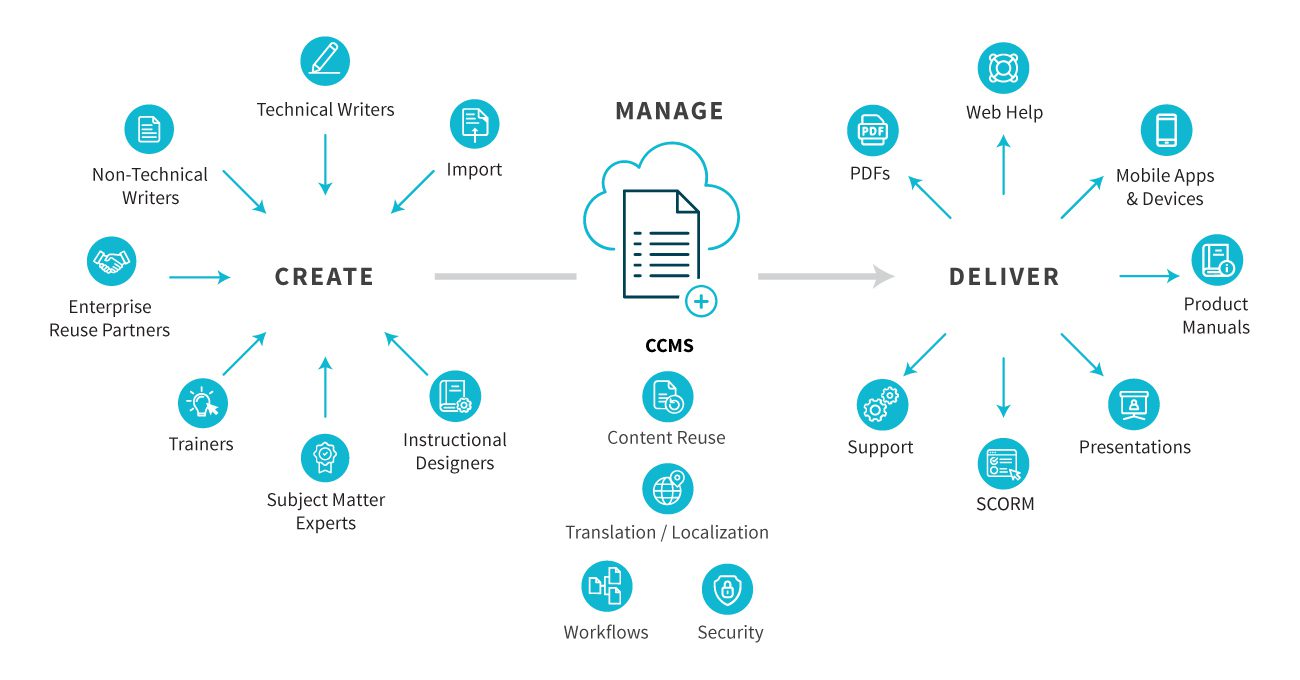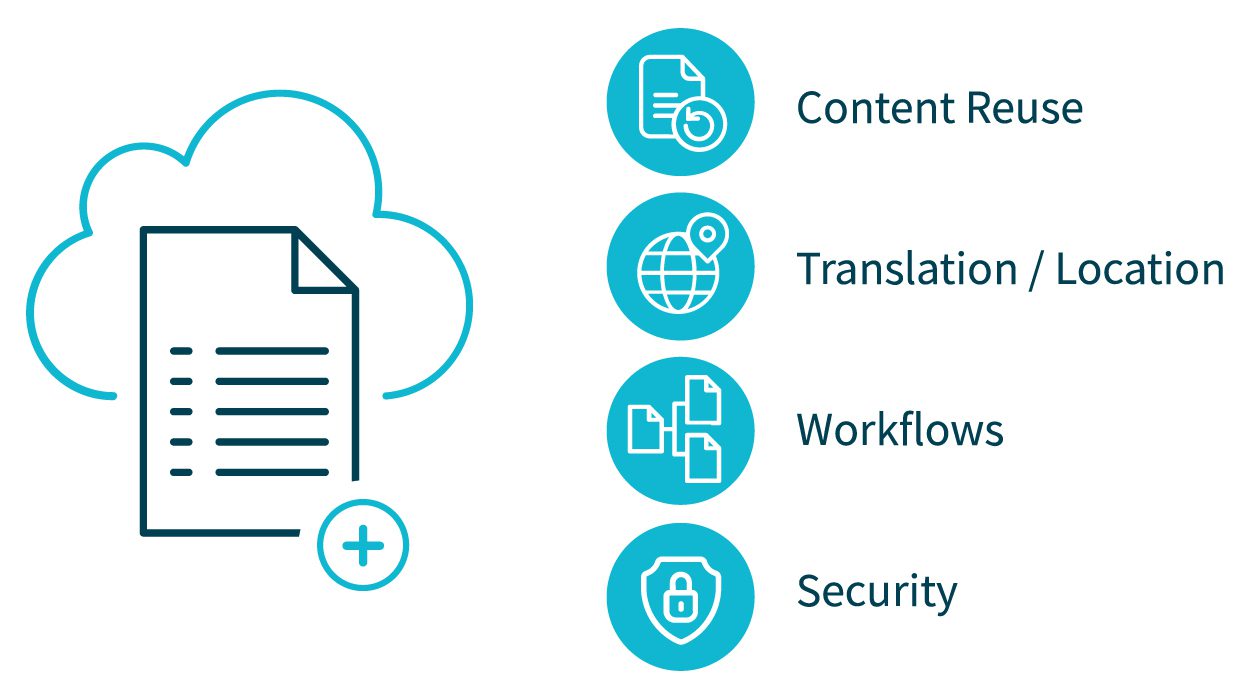6 things to look for in a component authoring solution
What is a CCMS?
A Component Content Management System (CCMS) is a relational database that automatically breaks down your documents and stores content in these reusable components, which are kind of like Legos.


This variant architecture is highly searchable and robust due to the granularity of the content being managed, which means you can store and easily manage large volumes of content without losing control of your documentation. From there you can intuitively manage components, workflows, translations, and more. Author-it provides an end-to-end CCMS software solution.
6 Important CCMS Features to look for:
Table of contents
1. Importing existing content is an important CCMS feature: If you’ve never worked with a component authoring system, it’s entirely possible your existing content is in a Word or desktop publishing format. While most solutions out there will tell you that importing from Word is an option, it’s often very difficult. Especially if you’re converting Word documents to DITA or XML. Before deciding, consider the most viable solution for your team. With Author-it, for example, importing from Word is a simple process where your content is broken down into components and stored in a true Component Content Management System (CCMS) for reuse, translation and more.


2. Easy to use interface: Authors already have a big job. Adding complexity to the user experience is the last thing they need. Make sure to select a product that is not only easy for technical writers, but also for contributors who may not have the ability to use code. Help your organization provide business critical content at scale.
3. Collaboration & Review: Speaking of contributors, the ability to collaborate and review comments and suggested changes to your content in real-time is a major plus. Especially in times like these when writing teams are shrinking and the need for direct contributions from SMEs and non-technical writers is crucial. With Author-it, the collaboration and review module was built around that need, so that technical writers can work with outside experts securely and with an interface that allows contributors to write freely, and takes the bottlenecks out of review. See if your current authoring platform is right-sized for your organization.
4. The technical capabilities of your contributors: A new trend in component authoring has emerged, including non-technical writers and subject matter experts in the authoring process. When you allow contributors to write and review content, you can save time and avoid the frustrating “hurry up and wait” game of older review processes. However, most SMEs and non-technical writers don’t have the experience, or the bandwidth, to learn technical writing skills and specifically, how to write in components. Ease-of-use for contributors should be at the forefront of your mind, as technical hurdles stemming from training non-technical people on component authoring is a giant time-suck, and quite frankly forms an unintended silo within your department. Solutions that are XML and DITA based are built by technical people for technical people and the entire authoring experience is dominated by structure and code. This environment isn’t best suited for a contributor whose expertise surrounds the subject that they’re writing about. Ask questions to providers about the true ease of use for contributors and consider whether or not you actually need an XML or DITA based tool, or if there’s a better solution for your team. Author-it’s real-time collaboration and review allows SME’s to contribute in a format that they’re familiar with, and involving contributors can help your organization provide business critical content at scale with faster time to market while creating a collaborative environment that breaks down silos.
5. A true CCMS: Does the platform you’re considering contain a true Component Content Management System with all of the CCMS features you need? While some companies advertise a built-in CCMS, often they’re file-based, meaning only one person can work on it at a time and content is overwritten. While DITA and XML solutions are CCMS, they’re really just a repository of code. A true CCMS, like Author-it, is a relational database with content broken down and stored in components. This database architecture is highly searchable and robust due to the granularity of the content being managed, which means you can store and easily manage large volumes of content without losing control of your documentation. With Author-it you can manage components, workflows, translation & localization and more with our built-in CCMS features. Check out switching to a component authoring system.


6. Publishing outputs: Multichannel publishing is crucial in an authoring tool as customers expect to have convenient options for content consumption. Being able to reach your audience where they prefer brings more awareness to your content and more convenience to your customers. When shopping for authoring solution options, make sure you weigh the benefits of an end-to-end solution, where you can create content once, store it in a built-in CCMS and publish to any output, anywhere, anytime.
How to choose a Component Content Management System (CCMS)
As technology evolves, the choices we have for effective component authoring tools broadens. What was once a very small pool of options has grown into a dizzying array of solutions. There are different technologies, such as DITA and XML, platforms with lots of bells and whistles, and tons of features that you may or may not need. If you’re just beginning your search for a new authoring tool, or even if you’re narrowing down your selections, make sure that the solution you choose is best suited for the needs of your authors and your organization. And don’t forget the delivery to your consumers.
Got questions? We can help. With Author-it, you can create, collaborate, manage, translate, reuse and publish content. All on one easy-to-use platform. Reach out for a free demo today.




